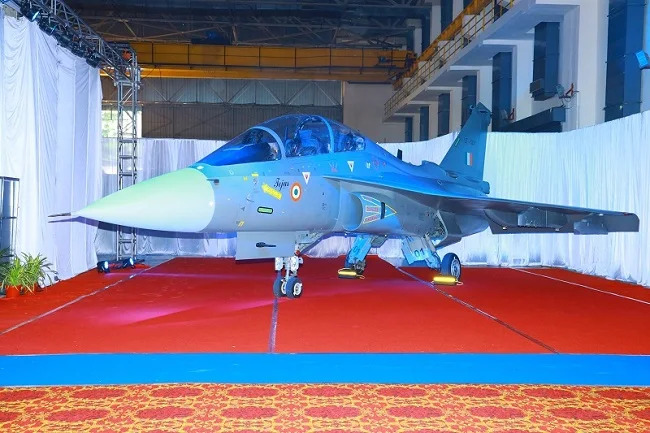In a move towards making India’s defence sector self-reliant, Hindustan Aeronautics Limited (HAL) handed over Light Combat Aircraft (LCA) twin-seater trainer version aircraft to the Indian Air Force (IAF) on October, 4 in Bengaluru, Karnataka
During the event, MoS Defence Ajay Bhatt said, “HAL has created history once again today. In these 9 years, we have been going to the top, step by step. Today, twin-seater LCA Tejas has been dedicated to the nation. This is an unforgettable historic day…This is historic too that these have been manufactured indigenously by HAL. We are going ahead with the mantra of Aatmanirbhar, and we are going ahead in all sectors. HAL has added one input in this chain.”
The LCA Tejas twin-seater represents a cutting-edge, lightweight, all-weather, multi-role 4.5 generation aircraft. It embodies modern concepts and technologies like relaxed static stability, quadruplex fly-by-wire flight control, carefree maneuvering, an advanced glass cockpit, integrated digital avionics systems, and the use of advanced composite materials for its airframe, according to HAL.
This accomplishment places India among the select group of nations with the capability to develop and operate such advanced aircraft in their Defense Forces, making it a noteworthy achievement under the “Atmanirbhar Bharat” initiative by the Government of India.
HAL has a standing order for 18 twin-seater versions of the LCA Tejas from the Indian Air Force (IAF), with plans to deliver eight of them in the 2023-24 timeframe. The remaining ten units will be delivered progressively by 2026-27.
Indian Air Force (IAF) Chief Air Chief Marshal VR Chaudhari says, “We have now signed a contract for 83 additional LCA (Light Combat Aircraft) and we are moving forward to procuring 97 more LCAs. In the coming years, we will have a fleet of 220 LCAs in the inventory of the Indian Air Force. It is a matter of pride for the country.” This will bring the total to 180 LCA Mark 1As.
The IAF Chief previously announced that the retirement of the MiG-21 fighter aircraft is scheduled for 2025, with plans to replace them with the LCA Mark 1A. He mentioned that the second squadron will be decommissioned soon, followed by the third one next year. The introduction of the LCA Mark 1A is expected to bridge the gap left by the outgoing MiG-21s.
Regarding the S400 missile defence system, Chief Chaudhari explained that the IAF’s contract was for five systems, with three already delivered. However, delivery has faced delays due to the Russia-Ukraine conflict. The IAF is confident that the remaining systems will be received within the next year. Additionally, the IAF is actively involved in the Indigenous Project Kusha for the development of indigenous long-range air defence systems.










